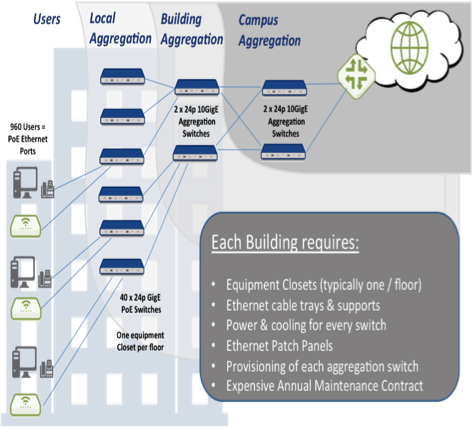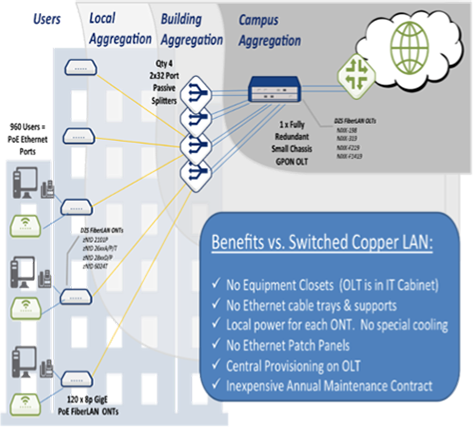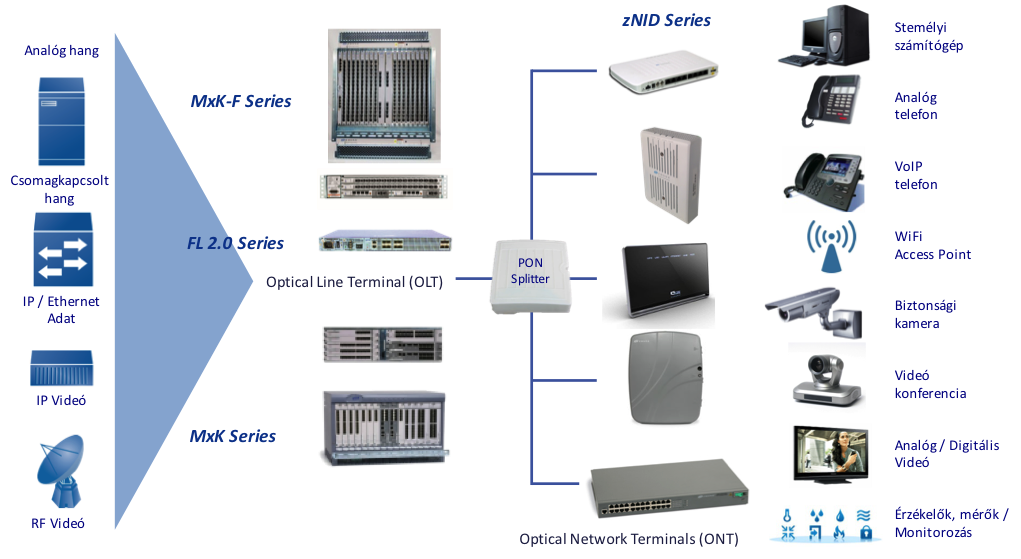
GPON FIBERLAN - PASSIVE OPTICAL LAN
Passive Optical LAN is a new LAN deployment architecture by DZS, offering superior technological advantages over copper LAN deployments.
Copper-based technology
Passive optical LAN technology


Some of the benefits of the technology:
- It simplifies the Local Area Network infrastructure
- It allows dynamical changes in the architecture with minimum efforts
- Is not limited by the distance and bandwidth constraints of twisted copper pair networks
- The Passive Optical LAN is secure by design, based on optical fiber and built-in encryption
- It provides stronger green benefits to enterprises compared to copper-based networks
PROVEN, TESTED TECHNOLOGY
- the first standard was created by ITU and IEEE in 1995
- Multi-billion dollars invested in the development of the PON technology
- The number of the wide-band optical networks today exceeds the number of the cable subscribers
THE DIAGRAM OF THE PASSIVE OPTICAL LAN

- The Passive Optical LAN of DZS (so called FiberLAN) is a high performance networking solution, fully based on leading industry standards. This network is easily scalable for multi-floor buildings and campuses, where the tenants introduce new services or upgrade their existing LAN infrastructure
- Being a Layer 2 transmission technology, the DZS FiberLAN solution provides complex Gigabit voice. video and data services over standard optical cables, significantly lowering the infrastructure costs for cabling and active devices, compared to the typical Ethernet LAN networking
- Based on the technological specifics, the Passive Optical LAN infrastructure realises savings on the energy consumption and on operational costs. The optical technology of the FiberLAN replaces the classical copper-based cables and active devices with mono-mode optical cables, which also eliminates the need for switches, patch-panels and rack cabinets on every floor.
The FiberLAN optical network significantly lowers:
- The energy consumptions - by up to 84%
- The deployment space - by up to 90%
- The CAPEX for networking elements by up to 70%, while increases the network reliability and manageability
- The costs for cabling - the production of the mono-mode optical cables is less expensive than the production of copper or multi-mode optical cables